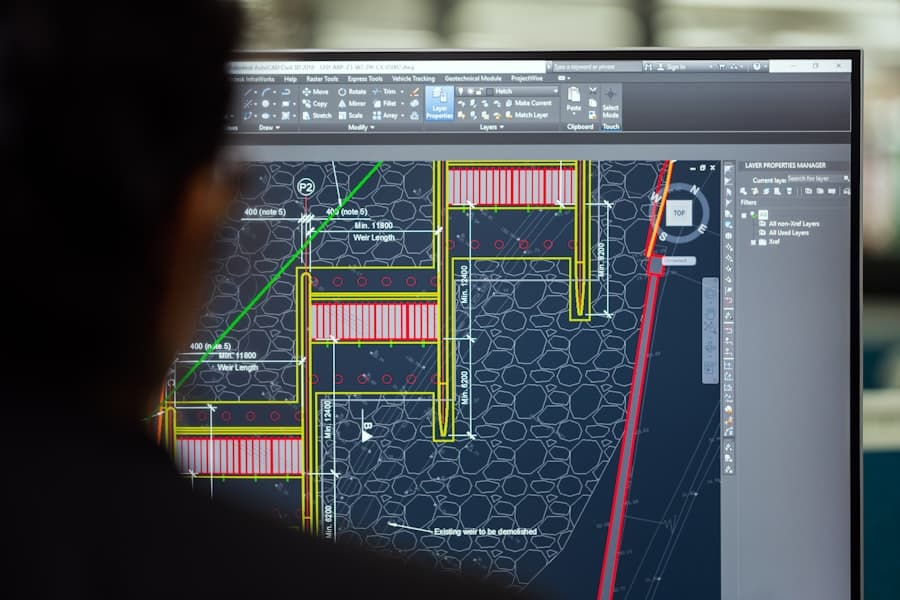Neurodiversity is a concept that recognizes and values the diverse range of neurological conditions that exist within the human population. This perspective challenges the traditional view of neurodevelopmental disorders as deficits or disorders that need to be fixed. Instead, neurodiversity posits that variations in brain function, such as autism, ADHD, dyslexia, and others, are natural human differences that contribute to the richness of human experience.
In educational settings, embracing neurodiversity means acknowledging that students learn in various ways and that these differences should be celebrated rather than stigmatized. This approach fosters an inclusive environment where all students can thrive, regardless of their neurological makeup. Incorporating neurodiversity into educational practices requires a shift in mindset among educators, administrators, and policymakers.
It involves recognizing that traditional teaching methods may not be effective for all learners and that a one-size-fits-all approach can inadvertently marginalize neurodivergent students. For instance, a student with dyslexia may struggle with reading-intensive assignments, while a student with ADHD may find it challenging to focus during lengthy lectures. By understanding these differences, educators can create tailored strategies that accommodate various learning styles, ultimately enhancing the educational experience for all students.
Key Takeaways
- Neurodiversity in education emphasizes the importance of recognizing and supporting the unique learning styles and strengths of neurodivergent students.
- Barriers to learning for neurodivergent students include lack of understanding, limited resources, and inaccessible learning materials.
- EdTech plays a crucial role in creating inclusive learning environments by providing personalized learning experiences and accommodating diverse needs.
- Assistive technologies such as text-to-speech software and graphic organizers can greatly benefit neurodivergent students in their learning process.
- Personalized learning and differentiated instruction are essential in catering to the individual needs and abilities of neurodivergent students, promoting a more inclusive educational experience.
Identifying Barriers to Learning for Neurodivergent Students
Cognitive Barriers
Cognitive barriers may manifest as difficulties in processing information, which can lead to challenges in understanding complex concepts or following multi-step instructions. For example, a student with autism may excel in visual-spatial tasks but struggle with verbal communication, making it difficult for them to participate in group discussions or express their understanding of a topic.
Emotional and Social Barriers
Emotional and social barriers are equally significant. Many neurodivergent students experience anxiety or low self-esteem due to their differences, which can further impede their ability to engage in the classroom. Social interactions may be particularly challenging for students on the autism spectrum, who might find it difficult to interpret social cues or engage in typical peer interactions.
Environmental Factors
Additionally, environmental factors such as classroom layout, noise levels, and sensory stimuli can create overwhelming situations for neurodivergent learners. For instance, a student with sensory processing disorder may become distracted or distressed in a noisy classroom filled with bright lights and bustling activity.
The Role of EdTech in Creating Inclusive Learning Environments
Educational technology (EdTech) has emerged as a powerful tool for fostering inclusive learning environments that cater to the diverse needs of neurodivergent students. By leveraging technology, educators can provide personalized learning experiences that accommodate individual strengths and challenges.
This flexibility allows neurodivergent learners to progress at their own pace, ensuring they grasp foundational concepts before moving on to more complex material. Moreover, EdTech can facilitate collaboration among students with varying abilities. Tools such as collaborative online workspaces enable neurodivergent students to engage with their peers in a supportive environment.
These platforms often include features like chat functions and shared documents, allowing students to communicate and collaborate without the pressure of face-to-face interactions. This can be particularly beneficial for those who may struggle with social anxiety or communication challenges, as it provides an alternative means of engagement that feels less intimidating.
Assistive Technologies for Neurodivergent Students
Assistive technologies play a crucial role in supporting neurodivergent students by providing them with tools that enhance their learning experiences. These technologies encompass a wide range of devices and software designed to address specific challenges faced by neurodivergent learners. For instance, text-to-speech software can assist students with dyslexia by reading aloud written content, allowing them to better comprehend the material without being hindered by their reading difficulties.
Similarly, speech-to-text applications enable students with writing challenges to express their thoughts more easily by converting spoken words into written text. Another example of assistive technology is the use of organizational apps that help students manage their time and tasks effectively. Many neurodivergent learners struggle with executive functioning skills, which can lead to difficulties in planning and organization.
Apps that provide visual schedules, reminders, and task breakdowns can empower these students to take control of their learning process. By utilizing such tools, educators can help neurodivergent students develop essential skills while also reducing frustration and anxiety associated with academic tasks.
Personalized Learning and Differentiated Instruction
Personalized learning and differentiated instruction are essential components of an inclusive educational framework that benefits neurodivergent students. Personalized learning involves tailoring educational experiences to meet the individual needs of each student based on their strengths, interests, and learning preferences. This approach allows educators to create customized learning plans that consider the unique challenges faced by neurodivergent learners.
For example, a student with ADHD may benefit from shorter lessons interspersed with hands-on activities to maintain engagement and focus. Differentiated instruction complements personalized learning by providing multiple avenues for students to access content and demonstrate their understanding. Educators can employ various teaching strategies—such as visual aids, interactive activities, and project-based learning—to cater to diverse learning styles within the classroom.
For instance, a teacher might present a science concept through a combination of videos, hands-on experiments, and group discussions to ensure that all students can engage with the material in a way that resonates with them. This flexibility not only supports neurodivergent learners but also enriches the educational experience for all students.
Addressing Sensory Needs with EdTech Solutions
Sensory needs are a critical consideration when creating inclusive educational environments for neurodivergent students. Many individuals on the autism spectrum or those with sensory processing disorders experience heightened sensitivity to sensory stimuli such as noise, light, or tactile sensations. EdTech solutions can play a pivotal role in addressing these sensory needs by providing tools that help create a more comfortable learning environment.
For example, noise-canceling headphones can be utilized by students who are easily distracted by background sounds during lessons or independent work time. These headphones allow them to focus on their tasks without being overwhelmed by auditory distractions. Additionally, virtual reality (VR) technology offers immersive experiences that can be tailored to individual sensory preferences.
Educators can use VR simulations to create calming environments or controlled exposure scenarios that help students practice coping strategies in a safe space.
Promoting Social and Emotional Learning through Technology
Social and emotional learning (SEL) is vital for all students but holds particular significance for neurodivergent learners who may face challenges in these areas. Technology can serve as an effective medium for promoting SEL by providing interactive platforms where students can develop essential social skills and emotional awareness. For instance, online games and simulations designed for social skills training allow neurodivergent students to practice interactions in low-pressure environments.
Moreover, digital storytelling tools enable students to express their emotions and experiences creatively. By creating narratives about their feelings or challenges they face, neurodivergent learners can gain insights into their emotional states while also fostering empathy among peers who engage with their stories. These technological approaches not only enhance social skills but also contribute to building a supportive community within the classroom where all students feel valued and understood.
The Future of Inclusive Education: Innovations in EdTech
The future of inclusive education is poised for transformation through ongoing innovations in EdTech. As technology continues to evolve, new tools and resources will emerge that further enhance the educational experiences of neurodivergent learners.
Such systems could identify patterns in learning behaviors and suggest personalized interventions that educators can implement immediately. Additionally, advancements in gamification are likely to play a significant role in engaging neurodivergent students. By incorporating game-like elements into educational content—such as rewards for completing tasks or interactive challenges—educators can create motivating environments that resonate with diverse learners.
This approach not only makes learning more enjoyable but also encourages persistence and resilience among students who may otherwise struggle with traditional academic settings. As we look ahead, it is clear that the integration of technology into education will continue to evolve alongside our understanding of neurodiversity. By prioritizing inclusivity through innovative EdTech solutions, we can create educational environments where every student has the opportunity to succeed and thrive regardless of their neurological differences.
A related article to “How EdTech Solutions Are Making Learning More Inclusive for Neurodivergent Students” is “Discover the Best Paying Jobs in Tech 2023” which discusses the lucrative career opportunities available in the tech industry. This article highlights the importance of technology skills in today’s job market and provides insights into the highest paying tech jobs for the upcoming year. To learn more about the best paying jobs in tech, check out the article here.
FAQs
What is EdTech?
EdTech, or educational technology, refers to the use of technology to facilitate learning and improve performance. This can include software, hardware, and educational theory and practice.
What does it mean for learning to be inclusive for neurodivergent students?
Inclusive learning for neurodivergent students means creating an environment and using teaching methods that accommodate and support students with diverse learning needs, such as those with ADHD, dyslexia, autism, and other neurodevelopmental differences.
How are EdTech solutions making learning more inclusive for neurodivergent students?
EdTech solutions are making learning more inclusive for neurodivergent students by providing personalized learning experiences, assistive technologies, and accessibility features that cater to diverse learning needs. This can include tools for text-to-speech, speech-to-text, interactive learning platforms, and adaptive learning programs.
What are some examples of EdTech solutions for neurodivergent students?
Examples of EdTech solutions for neurodivergent students include assistive technology tools like Read&Write, Co:Writer, and Kurzweil 3000, as well as learning platforms like BrainPOP, Khan Academy, and Quizlet that offer customizable learning experiences.
How do EdTech solutions benefit neurodivergent students?
EdTech solutions benefit neurodivergent students by providing them with the tools and resources they need to learn at their own pace and in a way that suits their individual learning styles. This can help boost their confidence, engagement, and academic performance.



